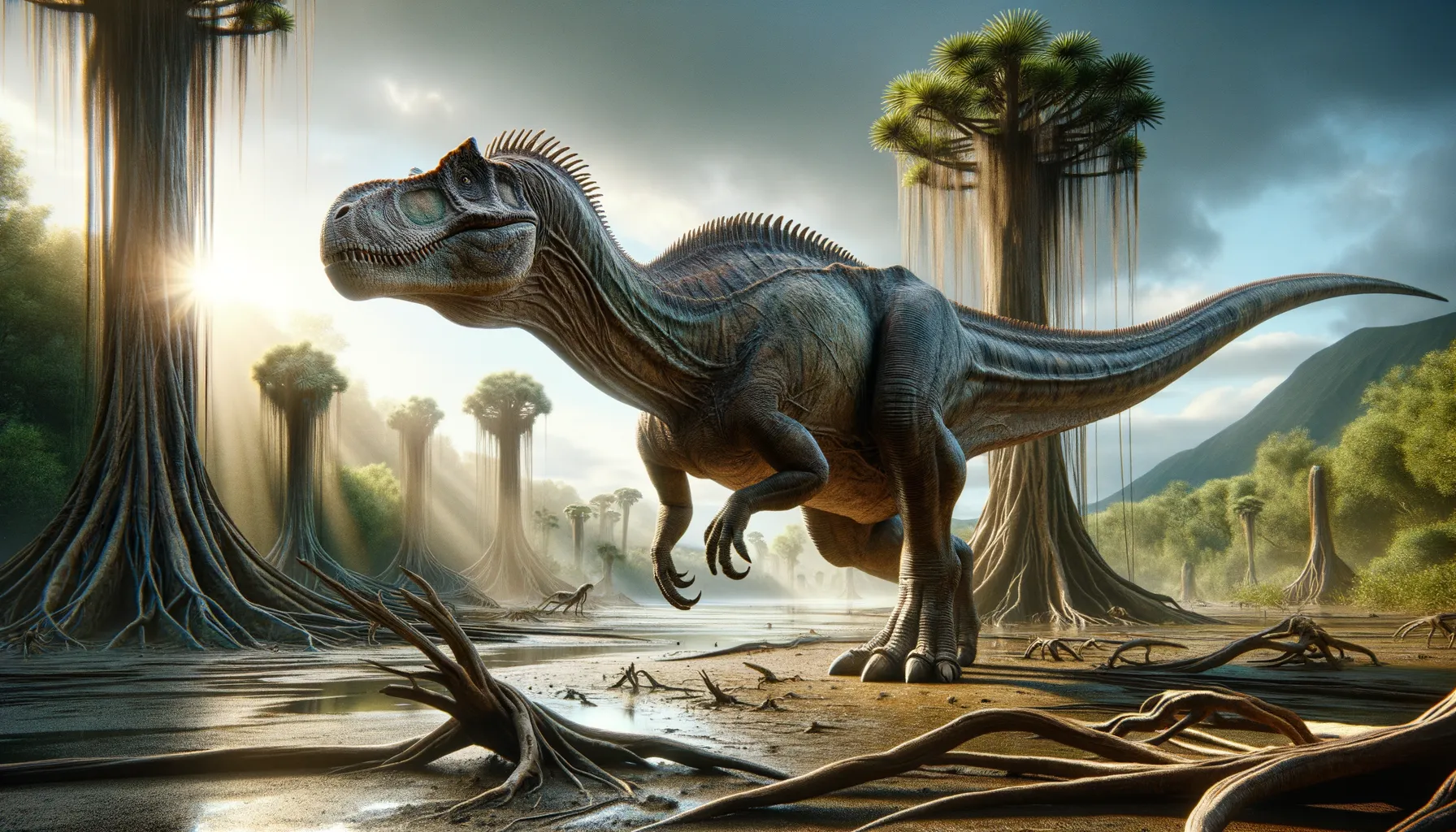
Naashoibitosaurus
The majestic herbivore of the Cretaceous!
Period
Cretaceous
Length
About 30 feet from head to tail.
Height
Around 15 feet tall when standing upright.
Weight
Approximately 2 tons, characteristic of large duck-billed dinosaurs.
Naashoibitosaurus was a large hadrosaur, or duck-billed dinosaur, that lived during the late Cretaceous period. Known for its broad snout and unique cranial features, this herbivore roamed the semi-tropical floodplains of what is now North America. Its fossils provide significant insights into the evolution and diversity of hadrosaurs and their adaptations to varied ecosystems.
Diet
Naashoibitosaurus was an herbivore, primarily feeding on the abundant vegetation of its time, including conifers and flowering plants. Its strong jaw muscles and hundreds of teeth were adapted for grinding tough plant material.
Hunting
Being a herbivore, Naashoibitosaurus did not hunt. Instead, it would have foraged for plants, relying on its ability to find and digest vast amounts of plant matter efficiently.
Environmental challenges
As a resident of the late Cretaceous, Naashoibitosaurus faced environmental challenges like fluctuating climates and periodic droughts. Predators like the Tyrannosaurus rex posed constant threats, especially to the young or weak individuals. The competition for feeding grounds with other large herbivores also shaped its survival strategies.
Speed
Moderate, suited for short bursts rather than long chases.
Lifespan
Estimated to be several decades, typical for large herbivorous dinosaurs.
First discovery
Discovered in the late 20th century in New Mexico, USA.
Fun Facts
- Naashoibitosaurus was a type of hadrosaur or duck-billed dinosaur that lived during the Late Cretaceous period.
- Its name means 'lizard from the Naashoibito (San Juan Formation)' reflecting where its fossils were discovered in New Mexico.
- This dinosaur is known for its distinctly crestless head, unlike some of its more flamboyant relatives with fancy headgear.
- Naashoibitosaurus likely lived in herds, roaming ancient floodplains and feeding on plants with its specialized teeth.
- Despite being a large dinosaur, it probably relied more on running away from predators rather than fighting them off.
- The fossils of Naashoibitosaurus suggest it was a common and successful herbivore in its ecosystem.
- Naashoibitosaurus lived around 70 million years ago, sharing its world with the likes of Tyrannosaurus rex.
Growth and Development
Young Naashoibitosaurus likely grew rapidly under the protection of adult members of their herd. Their growth involved significant changes in body size and the development of distinctive features like the crest and robust limbs. Juveniles required abundant food and safe habitats to reach maturity.
Habitat
Naashoibitosaurus inhabited riverine and coastal ecosystems, thriving in lush, wet environments. These habitats provided ample vegetation for feeding and were conducive to the herd's social structure. Seasonal floods could alter these landscapes, requiring adaptability to new feeding grounds.
Interaction with other species
Naashoibitosaurus lived alongside various dinosaur species, many of which were its competitors or potential predators. Social behaviors such as herding offered protection against predation. It likely coexisted with other herbivorous dinosaurs, sharing resources and habitats.
Natural lifespan
Naashoibitosaurus likely lived for 20 to 30 years in the wild.
Reproduction
Reproduction involved laying eggs in carefully hidden nests, often in colonies for added protection. Parental care might have included guarding the nesting site and guiding young to feeding areas. Communal nesting likely increased the survival rate of offspring.
Social behaviour
Naashoibitosaurus likely moved in herds, a strategy beneficial for protection and foraging. Social structures within the herd facilitated cooperation, especially during migrations and in raising young. Vocalizations and physical displays were likely used for communication among members.
Fossil locations
Fossils of Naashoibitosaurus have been primarily found in the Kirtland Formation in New Mexico. The locality has provided rich insights into the fauna of the late Cretaceous period. These sites are crucial for understanding the diversity and distribution of North American dinosaurs.
